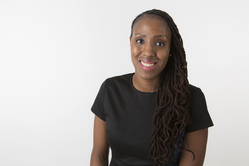photo/CCO 1.0
Screening their pediatric patients for Adverse Childhood Experiences (ACEs) showed researchers at Montefiore Medical Center that their cut-off score of 4 for referring children and families for help was too high, says Dr. Dana Crawford, a pediatric psychologist and the director of the Trauma-Informed Care Program at Montefiore Medical Center in Bronx, NY.

Their analysis of the results not only confirmed what pediatricians had suspected, it helped them readjust their strategy. “It lent itself to the conversation of ‘Why would we ever want a child to be referred as positive for [an ACE score] of 4? 4 is the number we want to avoid. We don’t want kids to get to 4,” explains Crawford.
That an ACE score of 4 is a red flag aligns with research examining the links between ACE scores and health problems. In a 2017 review of studies that together included more than 253,000 participants and appeared in the journal Lancet Public Health, participants who had ACE scores of 4 or more were at increased risk for all health outcomes compared to those who had no ACEs.
Montefiore pediatricians suspected that when screening their pediatric patients for adverse childhood experiences (ACEs), they weren’t getting any information that was different from other pediatric health screeners they used, says Crawford.
“Pediatric providers intuitively felt that the ACEs screening of [a score of] 4 or higher for pediatric patients wasn't identifying any patients different from the other behavioral health screens,” she says.
They were right. “It wasn’t capturing anything different,” she says.
Montefiore Medical Center, the university hospital that is part of the Albert Einstein College of Medicine, developed its ACE survey in collaboration with a Frontiers of Innovation Early Identification of Risk workgroup, part of the Harvard Center for the Developing Child. The ACE screen asks parents to count up all the ACEs that apply to their child, and put the total number in a box on the form, according to Crawford. Parents of children under the age of five with an ACE score of 4 or more are automatically offered a referral to the onsite HealthySteps program, which the center says is designed “to ensure that parents and babies are started on the right track.”
Children over the age of five are referred to the onsite Child and Adolescent Psychology/Psychiatry. Both are part of Montefiore’s Pediatric Behavioral Health Integration program. Although parents of children under one year of age also fill out their own ACE survey, for the purpose of the analysis of the pilot, the researchers looked at results only from children one year of age and older.
The data analysis included results of 14,899 pediatric patients between the ages of one and 18 who had been screened for ACEs between September 2016 and August 2017, according to a preliminary report. A final report is expected to be released in late fall/early winter, according to Crawford. (For a description of Montefiore’s ACE screening program in pediatrics, see an earlier story Montefiore Medical in Bronx screens 12,000+ kids.)
Researchers compared the results of the ACE screener with several other health screening tools including: the PSQ-17, the pediatric symptom questionnaire, which includes questions that ask such things as whether a child is fidgety, worries a lot, or gets into fights easily; and a child development tool, the Ages & Stages Questionnaire (ASQ) to measure development in babies at 3, 24 and 36 months old.
The data analysis showed that the ACE screener only captured 0.5% positive, (i.e. concerning) results not captured by the ASQ at 3 months, and a similarly minimal number of positives at 24 and 36 months – 0.6% and 0.4%. And the ACEs screen only captured 2.7 percent of positives not captured by the PSC-17.
What that means in layman’s language, explains Crawford, is that” [the ACE screener] wasn’t capturing any new information that was positive that resulted in a different population being referred for behavioral health services.”
As an example, says Crawford, “Say a child’s PSC score was 14, and their ACE score was 2, that PSC score would trigger a referral to behavioral health, but the ACE score of 2 would not, because it was not considered positive.”
Another consideration that went into Montefiore researchers reducing the cutoff for its positive score was the realization that adversity in childhood likely happens over time. “Because we’re looking at children from the age of one to 18, many of those children may not have gotten all of their 4 ACEs yet. Those kids may get their ACEs at 16. You might only have 2 ACEs at 10 years old,” says Crawford.
In the next couple of months, Montefiore will begin testing out a cutoff score of 2 at three pediatric clinics to see what they can learn.
In sum, Crawford says, it’s all about prevention.
“I think at the end of the day even if we got a lot of kids with [ACE scores of] 4,” she says, “that still is not the goal. Our goal was to capture kids to prevent 4s.”


Comments (0)